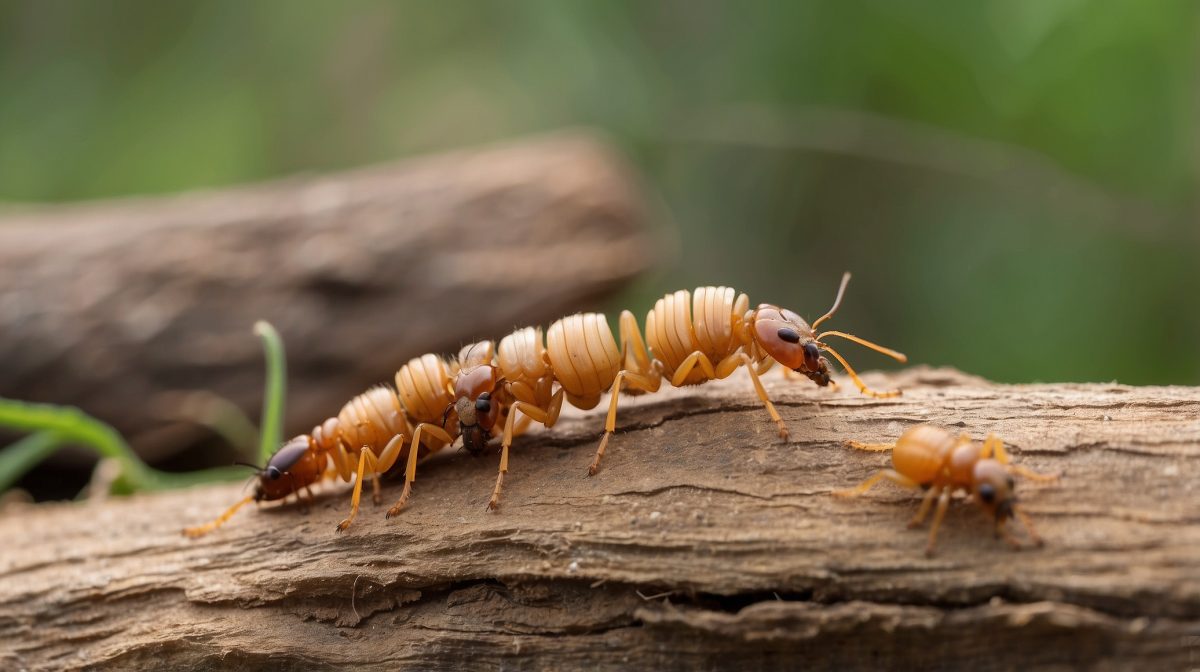Termites, those little insects that could give a beaver a run for its money when it comes to wood-chompin’, are more than just a nuisance. They’re a downright hazard to your home and property. Understandin’ their ways is crucial for all y’all homeowners and property managers out here in the Texas Hill Country. So, let’s dig a little deeper into the world of termites and see what we’re up against.
Texas Hill Country’s Climate and Termite Habitats
Around these parts, the climate is just about as perfect as a peach for outdoor livin’ – warm, sometimes a tad humid, with a gentle breeze now and again. But I’ll be darned if it ain’t also the perfect setup for termites to set up shop, too. Our beautiful Texas Hill Country weather does more than just make the bluebonnets bloom; it gives these critters the ideal conditions to thrive in.
Now, when it comes to prime real estate, termites ain’t too picky, but they sure do love our woodlands, our creeks, and anywhere there’s wood or moisture. From our oak savannas to the banks of the Pedernales, these varmints find cozy spots to call home. And that means we need to be on the lookout, ’cause they’re not just in the wild – they’re eyein’ our homes too.
Types of Termites in the Texas Hill Country
Let’s get acquainted with the types of termites we might bump into out here in the Hill Country. It’s like knowing the difference between a rattler and a garter snake – it pays to know what you’re dealin’ with. There’s a few different kinds that might come a-knockin’, like the Formosan, the Eastern Subterranean, and the Drywood termites.
Each type of these little buggers has its own telltale signs. The Formosan is like the outlaw of the termite world – aggressive and hard to corral. The Eastern Subterranean is sneaky, living underground and coming up to feed. And then there’s the Drywood termite, making its home right in the wood it eats. Look out for their calling cards: mud tubes, hollowed-out wood, and their tiny droppings that look like sawdust.
The Impact of Termites on Texas Hill Country Homes and Structures
Now, let’s jaw about the kind of havoc these varmints can wreak on our homes, barns, and fences. Termites are like uninvited guests at a barbecue – they’ll eat you out of house and home if you let ’em. They’re not picky eaters, either; they’ll chomp through beams, floors, and even wallpaper. It’s a slow feast, but given time, they can bring down the sturdiest of structures.
Just ask any old-timer around here, and they’ll tell you a tale or two about termite damage. It ain’t pretty. Whole homesteads have been compromised, and repairs can cost a pretty penny. But don’t fret none – there are ways to fend off these critters, and I’ll spill the beans on how to keep your property safe in just a little bit.
How to Keep Your Texas Hill Country Home Termite-Free
When it comes to termites, an ounce of prevention is worth a pound of cure. Start with the basics: keep your homestead dry and tidy. Fix any leaks pronto, make sure water drains away from your foundation, and keep that firewood stacked a respectful distance from your house. And don’t let any wood touch the ground – that’s like layin’ out a welcome mat for termites.
But sometimes, despite your best efforts, you might need to call in the cavalry. That’s when it’s time to get the professionals out for a termite inspection. They’ve got the tools and know-how to spot trouble before it gets out of hand. And if you do find yourself with a termite situation, there’s all sorts of treatments these days, from baits to fumigation, to show those termites the door.
A Case Study in Termite Management
Take it from the JL Bar Ranch Resort – they know a thing or two about keepin’ their stunning property termite-free. It’s a big part of keepin’ guests happy and preserving the natural beauty of the place. They’re on top of their game, with regular inspections and treatments as needed, to ensure not a single termite dares to set up shop on their land.
The folks over at the Ranch could teach us all a lesson or two about termite management. They understand that it’s not just about slappin’ down some treatments; it’s about maintaining a whole environment that’s less appealing to termites. And that’s something every homeowner in the Texas Hill Country can learn from and apply to their own slice of heaven.
Conclusion
Well, there you have it, folks – a good, hard look at termites in the Texas Hill Country. It’s important to stay vigilant and keep an eye out for these wood-chomping critters. Don’t let your guard down, and don’t hesitate to call in the pros if you suspect you’ve got termites. It’s all about protectin’ your home, your investment, and your peace of mind.
So keep those boots dusty and your eyes peeled. And remember, when it comes to termites, it’s better to be lookin’ for ’em than lookin’ at the damage they’ve done. Stay proactive, y’all, and keep those homes safe and sound.
FAQs
What’s the most common type of termite in the Texas Hill Country?
The Eastern Subterranean termite is the most common varmint you’ll find around these parts, always lurkin’ and lookin’ for a wood feast.
How can I tell if I have termites on my property?
Keep an eye out for telltale signs like mud tubes, hollowed-out wood, or termite droppings that look a bit like sawdust.
How often should I have my property inspected for termites?
It’s wise to have your property looked over by a professional at least once a year, just to be on the safe side.
Are DIY termite treatments effective in the Texas Hill Country?
While some DIY options might provide temporary relief, it’s best to let the pros handle it to ensure those termites are gone for good.
Can termites cause serious damage to my Texas Hill Country home?
You bet they can. If left unchecked, termites can cause serious structural damage that can cost a hefty sum to repair.


